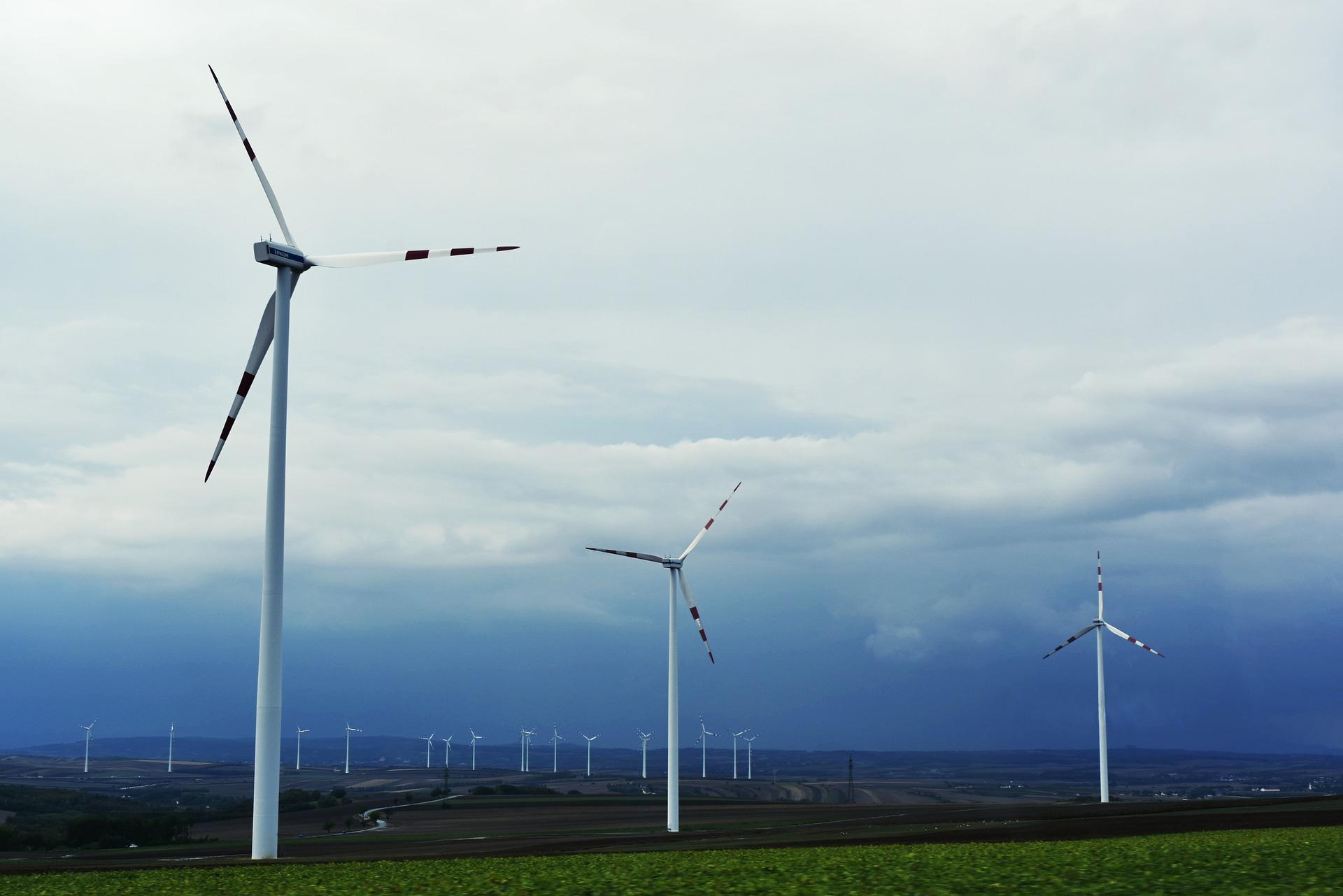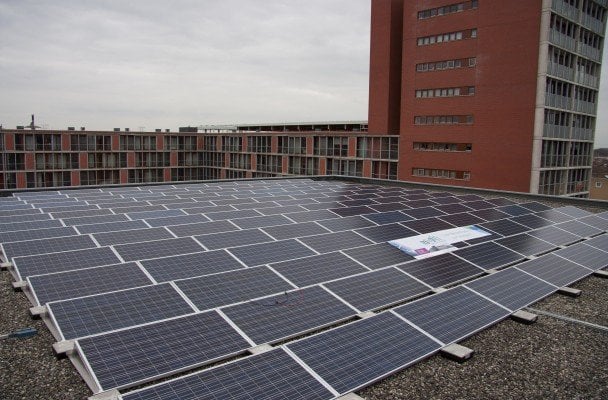
In the last months, we published stories about how the 27 EU countries are investing the money they received through the Recovery and Resilience Fund. In this final episode, we look back on the implementation of the plans 2 years after the launching of the instrument by the European Commission. Although this series will take a pause, we will continue to monitor the endeavors of the countries and report on new developments.
“Even assuming that 37 percent of each Recovery and Resilience Plan is going on climate investments – and adding the cohesion fund money – there will still be a sizeable investment gap to achieve the EU’s 2030 targets,” comments Olivier Vardakoulias. He’s an economist at Climate Action Network Europe – CAN Europe.
The Recovery and Resilience Facility – RRF – is the instrument launched by the European Commission to help member states to bounce back from COVID-19’s aftermath. Since its early days, RRF was deemed to help EU countries’ economies to regain the pace they lost in a green way. In light of the previously launched European Green Deal, the Commission insisted on a digital and green recovery. 37 and 20 percent are the shares countries had to allocate to climate and digital goals respectively within the plans they had to present.
The war changed it all
Over two years later after its launch, the scenario changed completely. The Russian-Ukrainian conflict set up a new priority on the agenda: becoming independent from Moscow’s gas. In freeing from such reliance, the Commission introduced REPowerEU – the European plan to end dependence from Russian fuel. Furthermore, the parliament voted to update its taxonomy for sustainable activities. The update included fossil energy sources on the way to a carbon-free future.
“Designing an instrument such as the RRF was a positive thing. After the 2008’s crisis, there wasn’t such a plan albeit many countries were severely affected. The quota for climate tagging and the introduction of the do not significant harm – DNSH – principle were positive aspects,” comments Vardakoulias. Despite the good intentions, not everything went as planned.
Undefined regulation
Vardakoulias: “Some problems were embedded in the regulation itself. The first one concerns the DNSH provisions for investments, which for example still allows – under some conditions – fossil fuel-related investments. Another critical point is defining green investments. Basically, the regulatory provisions on climate tagging were too loose in defining them. For some of the expenditures, you can really question whether or not it’s money actually spent on the green transition.”
The lack of accuracy of the climate tagging methodology left member states freer to plan. This didn’t necessarily result in positive outcomes. Without clear more precise guidelines on what was green and what wasn’t, countries planned projects that weren’t necessarily eco-friendly. An example comes from Greece, with millions invested in grey infrastructure – dams – to protect from floods – with potentially detrimental effects on biodiversity. What’s more, the initial Slovakian draft contained an action to finance fossil gas boilers.

Olivier Vardakoulias
Economist at Climate Action Network Europe
Among his interests, there is the transition to an environmentally sustainable economic model.
As the plans came to Bruxelles, many of these ideas were cut off from the plans. NGOs’ pressure made – in the case of Slovakia – remove from the RRP the measure on boilers. Other countries included them in their drafts too.
In February, the Commission published the first document on the RRF’s implementation. In the paper, the Commission claimed that 40 percent of the total budget was on climate investments – over the 37 target. “Using more stringent definitions – as done by the Green Recovery Tracker – figures are lower,” Vardakoulias adds. Again, definitions matter.
This same lack of regulation is what’s limiting the spending processes. According to the economist, the simpler structure of the RRF – in comparison with other EU funds – gives less control over funds. Conversely, disbursing procedures are more stringent for the cohesion funds, which come with much more rules.
No civil society involvement
Being the RRF an extraordinary instrument, it was quickly outlined to give a prompt response to the crisis. As a result, citizens had little – or no room – to participate in the process. Governments often expedited public consultations on respective recovery plans. Each country’s government planned on its own, in many cases with minimal civil society involvement in the debate. Things changed a bit with the implementation monitoring.
“Some countries created ad hoc committees for monitoring, others have in their parliament a dedicated commission for overseeing execution. But in many member states, there is nothing. The amendment of the RRF regulation tabled by the Commission for RepowerEU should be harnessed for reopening public participation provisions in order to reinforce them,” the economist underlines.

Disappointing projects
Giving his overview of the measures and projects contained in the 27 plans, Vardakoulias has a few more remarks. “Firstly, is a lack of financing for energy communities and decentralized energy more broadly, that also need public investment support. Secondly, I find transport decarbonization financing – as planned in the recovery plans – unimaginative. The majority of investments concern the installation of charging points for private electric vehicles and more minor investments for the renewal of bus fleets. The decarbonization of our transport system can’t only be done by replacing combustion engines. I would have expected more investments promoting modal shifts, through an expansion of public, shared, and multimodal transport networks. Thirdly, circular economy and biodiversity-related investments included in the plans are not ambitious enough.”
Fossil fuels will be financed
From last February onwards, cutting ties with Russia came to be a hot topic to deal with. In achieving this goal, there’s wide room to maneuver. “Some of the measures of the REPowerEU strategy erase the DNSH principles. In other words, if the proposal of the European Commission to amend the RRF regulation goes through, member states will be able to finance fossil fuel projects through REPowerEU chapters. They will, as long as it is demonstrated that they are helping to get rid of Russian gas. This outcome could be really negative,” emphasizes Vardakoulias.
REPowerEU presented a combination of short, mid, and long-term objectives. Three pillars guide the measures: demand reduction, diversification of suppliers for conventional (fossil) fuel imports whilst future–proofing the corresponding infrastructure, and acceleration of the transition to renewable energy sources.

On July 18, Ursula von der Leyen announced that the Commission signed a deal with Azerbaijan. The agreement consists in doubling natural gas imports from Asian country by 2027. Member states are proceeding autonomously too. Outgoing Italian PM Mario Draghi and Algerian president Abdelmadjid Tebboune agreed on an increase in gas flows to Italy.
What will happen after 2026?
2026 is RRF’s designated deadline. By then, all projects must be completed. Considering the size of the RRF in channeling grants to member states there is a risk that – if the RRF isn’t replaced by another EU instrument – the green transition will slow down. This is because not all countries have the capabilities to afford billion euros-worthy spending schemes needed for the green transition.
In terms of the prospects for a new EU instrument after 2026, Vardakoulias comments: “Multiple levels need to be taken into account. Governments have barely started spending the recovery money they received. At this stage, funds absorption is still low. The priority should be put on fully absorbing available RRF and cohesion policy funds for climate action in the short term. At the same time, another prerogative is reopening the conversation on creating a permanent RRF-like EU fund. It will serve for financing climate and green transition investments in the medium term.”

As geopolitical scenarios will keep unfolding, proper fund absorption will be pivotal. “I bet on a backlog on 2021-27 cohesion funds simply because governments are prioritizing the absorption of recovery funds first in 2026,” comments Vardakoulias. “Still the investment gap is there and being in mid-2022, spending is happening at a slow pace. Beyond accelerating the full absorption of EU funds for climate action, filling the green investment gap will also require additional actions. Both on the national level and financial regulators and supervisors (including the European Central Bank) for what concerns private investment. These actions could help too in making sure that sufficient money is invested in the green transition,” sums up Vardakoulias.
Support us!
Innovation Origins is an independent news platform that has an unconventional revenue model. We are sponsored by companies that support our mission: to spread the story of innovation. Read more.
At Innovation Origins, you can always read our articles for free. We want to keep it that way. Have you enjoyed our articles so much that you want support our mission? Then use the button below:








